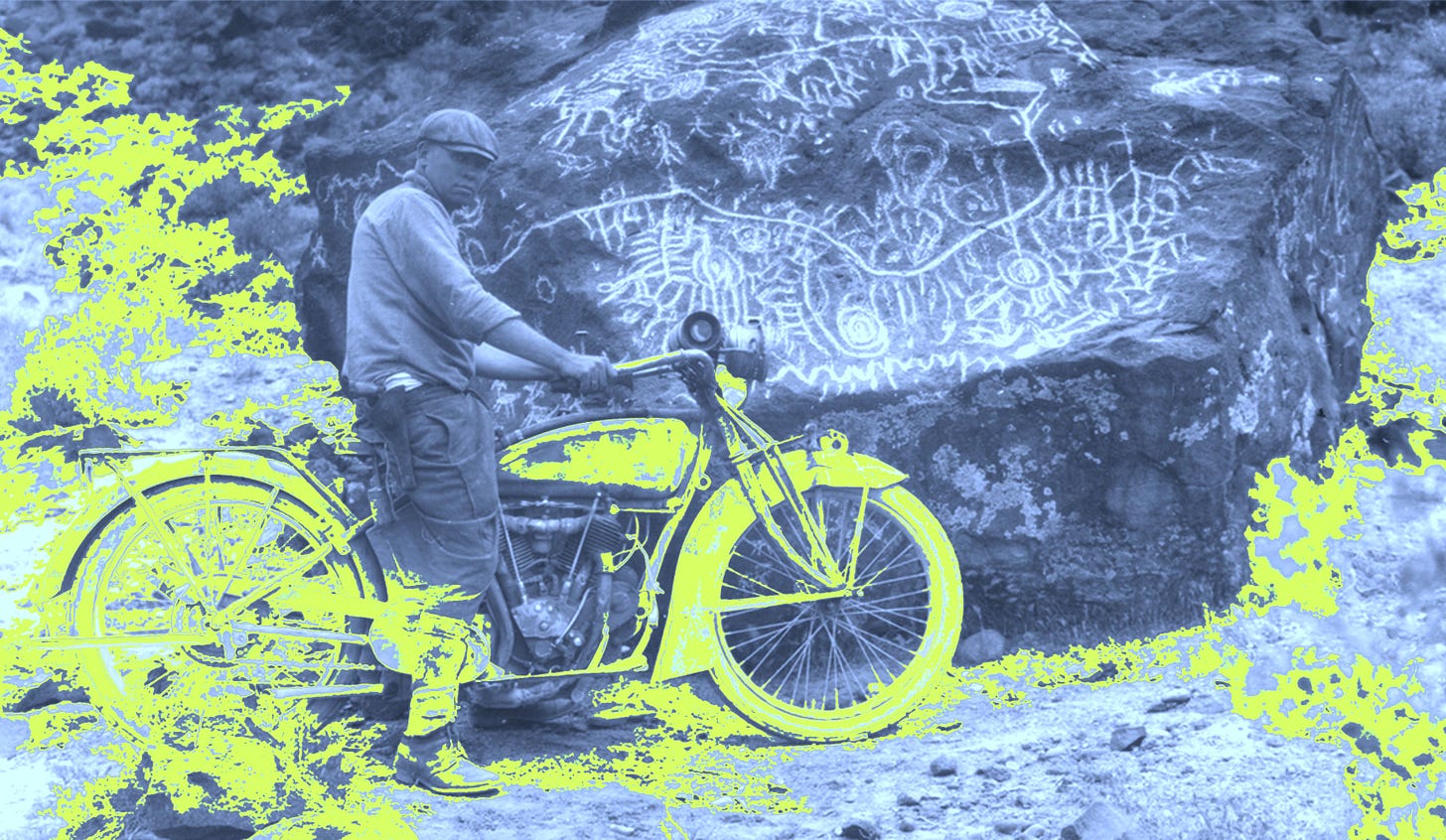Photo of a visitor at Map Rock along the Snake River. Taken from Territory Magazine.
On "reading" petroglyphs:
When I approach something that I believe I will be able to read, I approach with a sense of expectation, of confidence that a smooth communication of meaning will take place. This is not so when I attempt to read something that subverts that expectation. When that happens, a new process takes place: a humbled, searching process, where new senses are activated. This Sunday's Field Studies will be visiting the petroglyphs inscribed into the boulders that were left by an ancient flood along the Snake River. These petroglyphs, left thousands of years ago, are inscrutable signs to my eye. A reader today, especially one from my background, would have no access to the stories embedded in this surface, in terms of a traditional approach to reading them. How then, does a visitor approach a sign or symbol? Must we let go of the idea of forming meaning? Must we tune into other languages that might be voiced in the environment? Must we wonder through history, with no clear map, about what the author was communicating through these signs? How do we build our own relationship with a place, without imposing stories over these ones carved into the rock? Maybe this will be a revealing trip: as approaching ancient signs can call up the histories that "new readers" carry with them, and expose the lenses that we are configured to read through.
Look out for a follow-up to these thoughts, after this weekend’s Field Studies 03.




